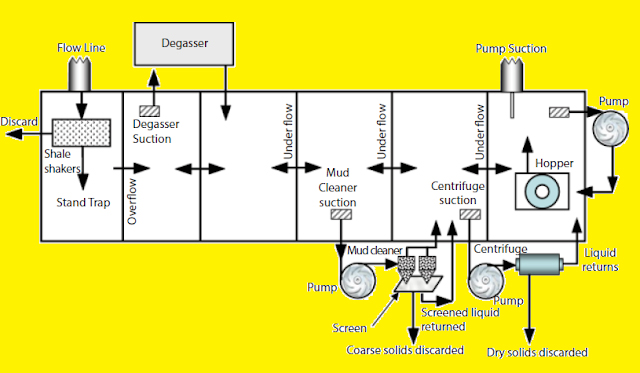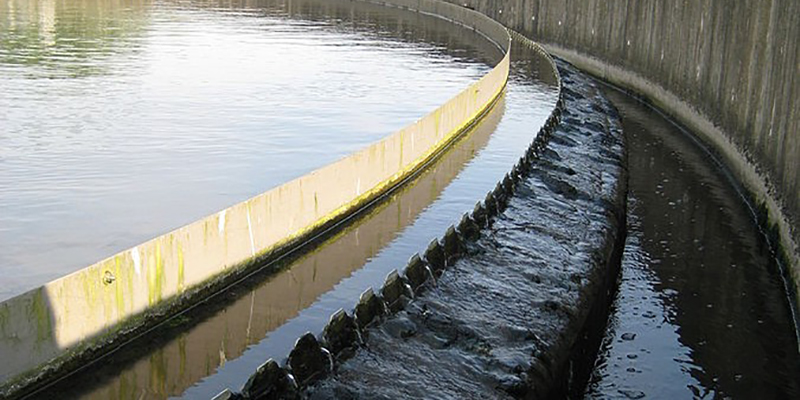“Solid control” is a term used in various industries, including oil and gas drilling, construction, mining, and wastewater treatment. In each of these contexts, solid control refers to the management and handling of solid materials that are present in liquids, such as drilling mud, wastewater, or slurries. The primary goal of solid control is to separate and remove these solids from the liquid, ensuring the efficiency, safety, and environmental compliance of industrial processes. Below is an in-depth overview:
1- Oil and Gas Drilling
In the oil and gas industry, solid control is crucial during drilling operations. As a drill bit penetrates the earth’s surface, it generates drill cuttings—solid particles of rock, soil, and other materials. These cuttings, along with formation fluids, are carried to the surface by the drilling mud, a specially formulated fluid circulated downhole to cool the drill bit, carry away cuttings, and maintain pressure. Solid control equipment such as shale shakers, centrifuges, hydrocyclones, and mud cleaners are employed to separate the drill cuttings from the drilling mud. This separation process is vital for preserving the properties of the mud, reusing it, and preventing equipment damage and wellbore instability.

2- Construction and Mining
In construction and mining activities, solid control involves managing the solids present in drilling fluids and slurries. Drilling fluids, used to cool and lubricate drilling equipment, can become contaminated with soil, rock fragments, and other solids during drilling operations. Solid control equipment such as desanders, desilters, and centrifuges are utilized to remove these solids from the drilling fluid, ensuring its effectiveness and preventing damage to drilling equipment.
3- Wastewater Treatment
Solid control in wastewater treatment refers to the removal of solid particles, organic matter, and other contaminants from wastewater streams. Wastewater often contains suspended solids, such as dirt, debris, and organic material, which must be removed before the water can be safely discharged or reused.
Typically, solid control in wastewater treatment follows a hierarchical process known as the stage ladder approach. solid control in wastewater treatment begins with waste reduction at its origin, then progresses to recycling, and finally encompasses treatment and disposal. Within this framework, there are two primary subcategories:
1) Solids collection and control.
2) Waste Treatment and Disposal.
Solid Collection and control involves the separation of solid particles from wastewater such as drilling mud, cleaning the mud, and reclaiming it before reintroducing it into the system, as explained completely in this section.
Following the solids collection and control phase, Waste Treatment and Disposal involves managing and disposing of waste generated by drilling fluid and drill cuttings. Depending on the mud system employed and initial treatment, the water content and toxicity of the cuttings may remain high, necessitating additional treatment before final disposal. This stage may not always be necessary, as non-toxic waste can sometimes be disposed of immediately. However, oil-based mud and synthetic-based mud are considered toxic and must undergo a treatment and disposal process.
Importance of solid control in wastewater treatment
Environmental Protection
Effective solid control is essential for protecting the environment from contamination and preserving natural resources. By removing solid particles and contaminants from industrial processes, solid control measures help prevent pollution of soil, water bodies, and ecosystems. Proper solid control in wastewater treatment also ensures compliance with environmental regulations and standards governing waste disposal and water quality.
Protection of Ecosystems
Solids present in wastewater can have detrimental effects on aquatic ecosystems if discharged untreated. Excessive sedimentation, nutrient enrichment, and oxygen depletion can harm aquatic life and disrupt ecosystem functioning. Solid control in wastewater treatment helps minimize these impacts by removing solids before discharge, thereby safeguarding the health of receiving water bodies.
Prevention of Equipment Damage
Solid particles in wastewater can cause abrasion and damage to treatment equipment such as pumps, pipes, and valves. By effectively controlling and removing solids, solid control measures help prevent equipment wear and prolong the lifespan of treatment infrastructure, reducing maintenance costs and downtime.
Optimization of Treatment Processes
Solid control in wastewater treatment ensures that treatment processes, such as biological treatment or disinfection, can operate at their optimal efficiency. By reducing the presence of solids, these processes can achieve better performance in terms of pollutant removal, microbial activity, and pathogen reduction.
Enhancement of Reuse Opportunities
Treated wastewater can often be reused for non-potable purposes such as irrigation, industrial processes, or groundwater recharge. Solid control processes ensure that the quality of treated wastewater meets the required standards for reuse, expanding opportunities for water conservation and sustainable resource management.
Resource Conservation
Effective solid control in wastewater treatment promotes resource conservation by maximizing the recovery and reuse of valuable materials. In drilling operations, for example, recycling drilling mud through solid control processes reduces the need for fresh water and raw materials, conserving resources and minimizing waste generation. Similarly, in wastewater treatment, solid control facilitates the recovery of biosolids or other beneficial byproducts for reuse or recycling.

